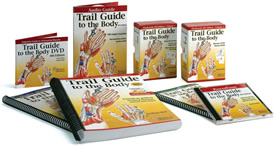BOOKS OF DISCOVERY
BOOKS OF DISCOVERY is one of the most respected publishers of foundational manual therapy textbooks, eTextbooks, and educational resources, covering musculoskeletal anatomy, palpation, surface anatomy, kinesiology, pathology, and anatomy and physiology.
I was lucky to come across the series of anatomy books published by Books of Discovery. These books present superficial anatomy and palpation to the professional dedicated to Physical Therapy and Sports or Therapeutic Massage. One of the areas most forgotten in Clinical Anatomy is superficial anatomy. For medical students the anatomy curriculum is being shortened due to the need to dedicate time to other difficult topics such as biochemistry and cellular biology. As the rate of discovery in the medical sciences increases, the time that a physician and/or a medical student can dedicate to anatomy is constrained.
The art of palpation of muscles and joints is beautifully presented in this series of books and multimedia which I strongly recommend. These materials present a wealth of knowledge to the Health Care Professional. This series of books, flashcards, and DVD's also includes instructor manuals which not only are easy to read but easy to put into practice. You can read more about these products by going to the Books of Discovery website at www.booksofdiscovery.com.
Dr. Miranda




